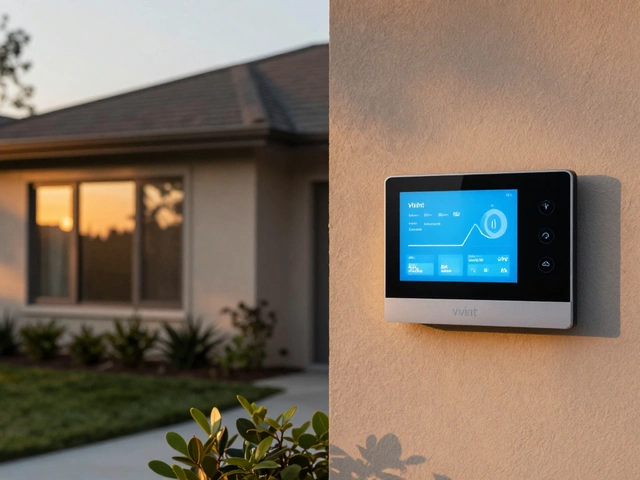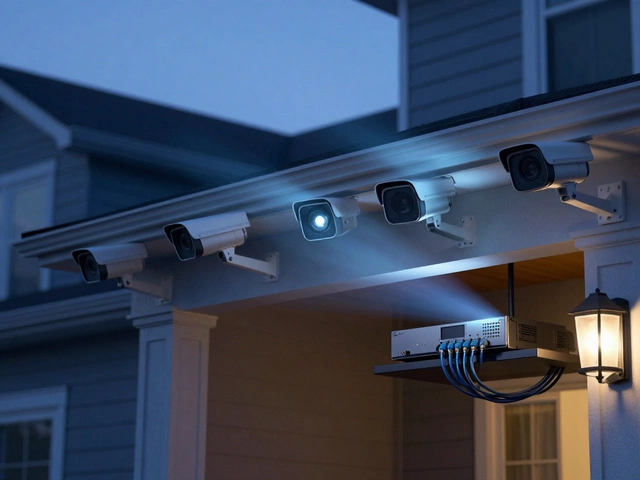Ring Alarm: What It Is and Why It Might Be Right for Your UK Home
If you’ve been scrolling through home security options, you’ve probably seen Ring’s name pop up a lot. Ring Alarm is the company’s own alarm system, designed to work alongside its video doorbells and cameras. It promises wireless sensors, a DIY install, and a mobile app that lets you arm or disarm the system from anywhere. In plain terms, it’s a set of motion detectors, door/window contacts, a keypad, and a base station that talks to the Ring app on your phone.
Most people wonder if a Ring system is worth the money compared with big names like ADT or a traditional wired alarm. The short answer is that Ring offers a flexible, budget‑friendly option that still gives you 24/7 monitoring if you add the Ring Protect plan. It’s not a full‑blown professional setup, but for many UK households it hits the sweet spot between cost and peace of mind.
Key Features of Ring Alarm
Ring Alarm’s main selling points are its wireless design and easy expansion. The base station plugs into a power outlet and connects to your home Wi‑Fi, so you don’t need to run any cables through walls. Sensors run on long‑life batteries that last a year or more, and you can add extra motion sensors, contact sensors, or a flood detector whenever you need.
The system also integrates with Ring’s video doorbells and cameras. When a sensor trips, you’ll get an instant push notification with a live video feed if you have a camera at the door. The Ring app lets you set up custom alerts, schedule arm/disarm times, and see a history of events.
If you want professional monitoring, you can subscribe to Ring Protect Plus for £9.99 a month (prices may vary). That gives you 24/7 monitoring, police dispatch, and cellular backup if the internet goes down. Without a subscription, the app still sends alerts, but you’ll need to call emergency services yourself.
Installing and Using Ring Alarm in the UK
Installation is a weekend project for most people. First, place the base station near your router and plug it in. Then use the Ring app to connect the base station to your Wi‑Fi. After that, you’ll add each sensor by pressing its “pair” button and following the on‑screen steps. The app shows a simple map so you can see where each sensor is placed and whether it’s communicating correctly.
When you arm the system, the keypad will give you a visual countdown before the sensors go live. You can set it to “Stay” mode (perimeter only) or “Away” mode (full coverage). If a sensor trips, you’ll hear a siren at the base, get a push notification, and, if you have a monitoring plan, the alarm centre will be alerted automatically.
Ring also offers a range of optional accessories, like a keypad with a battery backup, a Z‑Wave compatible hub for future smart‑home devices, and a smoke/CO detector that talks to the same app. This means you can gradually turn your whole house into a smart, monitored space without a major overhaul.
One thing to keep in mind is the reliance on your internet connection. If the Wi‑Fi drops, the base station will switch to its built‑in cellular backup (only if you have a monitoring subscription). Without that, you’ll still get local alerts, but the remote notifications stop. So a stable broadband line is a good idea.
Overall, Ring Alarm gives UK homeowners a straightforward, expandable security solution that works well with the rest of the Ring ecosystem. It’s cheap enough for renters, flexible enough for owners, and the app makes daily use feel like a natural part of life rather than a chore.
Ready to try it? Grab the starter kit, follow the app’s step‑by‑step guide, and you’ll have a working alarm system in a few hours. If you hit any snags, Ring’s online help centre has short videos that walk you through each sensor type. Happy securing!






